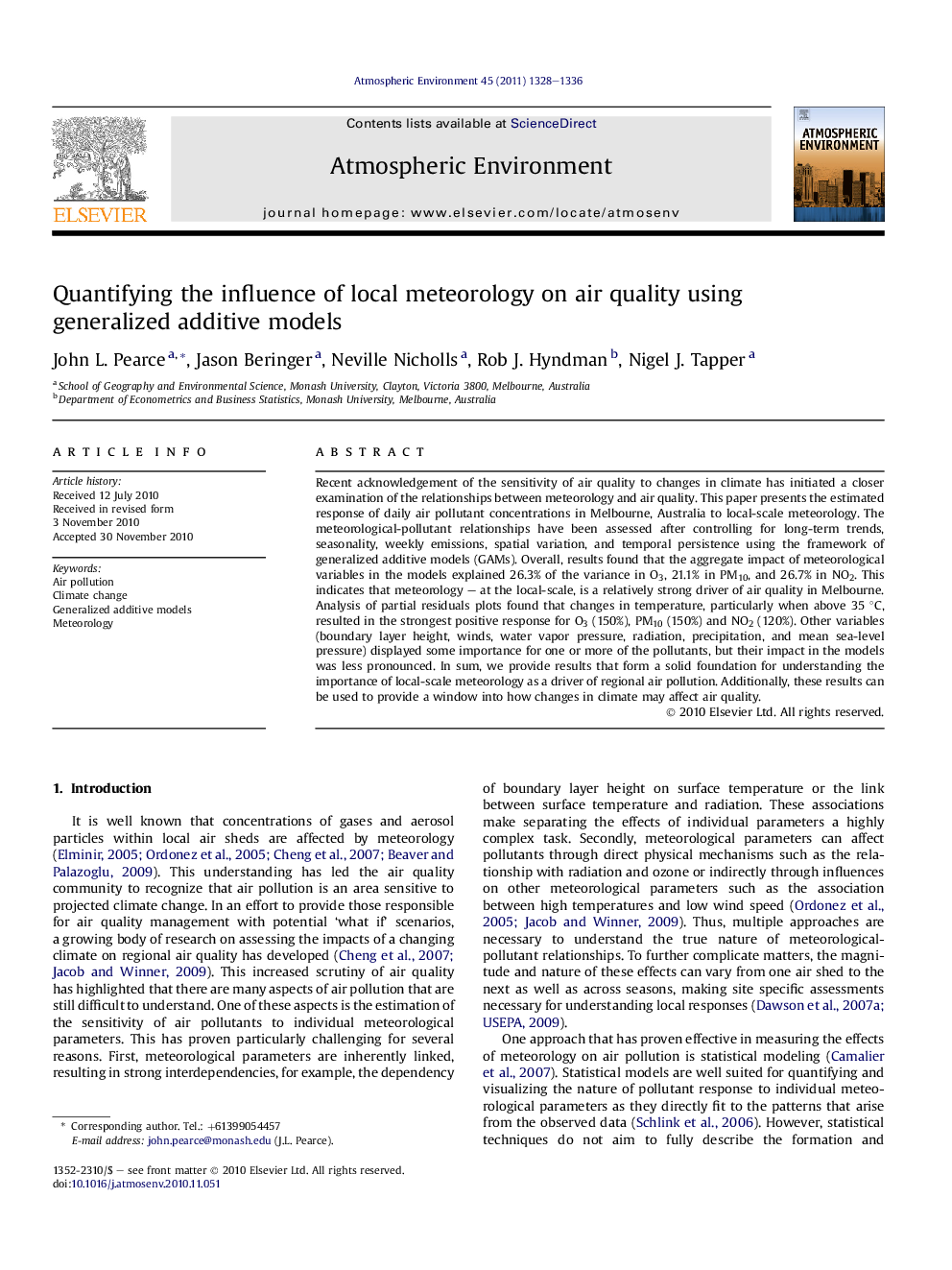| کد مقاله | کد نشریه | سال انتشار | مقاله انگلیسی | نسخه تمام متن |
|---|---|---|---|---|
| 4440008 | 1311042 | 2011 | 9 صفحه PDF | دانلود رایگان |

Recent acknowledgement of the sensitivity of air quality to changes in climate has initiated a closer examination of the relationships between meteorology and air quality. This paper presents the estimated response of daily air pollutant concentrations in Melbourne, Australia to local-scale meteorology. The meteorological-pollutant relationships have been assessed after controlling for long-term trends, seasonality, weekly emissions, spatial variation, and temporal persistence using the framework of generalized additive models (GAMs). Overall, results found that the aggregate impact of meteorological variables in the models explained 26.3% of the variance in O3, 21.1% in PM10, and 26.7% in NO2. This indicates that meteorology – at the local-scale, is a relatively strong driver of air quality in Melbourne. Analysis of partial residuals plots found that changes in temperature, particularly when above 35 °C, resulted in the strongest positive response for O3 (150%), PM10 (150%) and NO2 (120%). Other variables (boundary layer height, winds, water vapor pressure, radiation, precipitation, and mean sea-level pressure) displayed some importance for one or more of the pollutants, but their impact in the models was less pronounced. In sum, we provide results that form a solid foundation for understanding the importance of local-scale meteorology as a driver of regional air pollution. Additionally, these results can be used to provide a window into how changes in climate may affect air quality.
Research highlights
► PM10, and NO2 all show significant responses to local-scale meteorology.
► Temperature changes are the strongest meteorological driver of air pollution.
► Boundary layer height, winds, and water vapor pressure are also important.
► Results suggest that climate change may worsen air quality.
Journal: Atmospheric Environment - Volume 45, Issue 6, February 2011, Pages 1328–1336